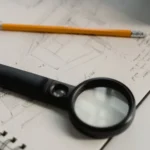Patent Chemical Structure Search
- Updated on: Jan 11, 2025
- Read 14 minutes
- Published on Jan 11, 2025
A patent chemical structure search is a type of search conducted to find patents that contain a specific chemical structure. It involves searching through patent databases using a chemical structure query to identify patents that disclose information about a particular chemical compound or class of compounds. This type of search is useful for researchers, inventors, and companies in the chemical industry who are interested in finding prior art, exploring potential patent infringement, or monitoring the patent landscape for new developments in their field. Patent chemical structure searches can be performed using specialized search tools and databases that allow users to draw or input chemical structures and retrieve relevant patent documents. These searches can provide valuable information about the patentability, novelty, and potential commercial applications of a chemical compound.
Importance of patent chemical structure search
A patent chemical structure search is a crucial step in the process of patent analysis and research. It involves searching and analyzing the chemical structures mentioned in patent documents to identify novel compounds, assess their potential applications, and evaluate their patentability. By conducting a comprehensive chemical structure search, researchers and patent professionals can gain valuable insights into the patent landscape, identify potential competitors, and uncover opportunities for innovation. Moreover, a thorough analysis of the chemical structures can help in determining the scope of patent protection, assessing the validity of existing patents, and avoiding infringement issues. Overall, the importance of patent chemical structure search cannot be overstated, as it forms the foundation for informed decision-making in the field of intellectual property and innovation.
Key components of patent chemical structure search
A patent chemical structure search involves several key components:
Chemical structure database: This is a comprehensive collection of chemical structures, including both organic and inorganic compounds. It serves as the foundation for conducting searches based on chemical structures.
Search algorithms: These are algorithms specifically designed to search for chemical structures in the database. They utilize various techniques, such as substructure searching, similarity searching, and exact matching, to identify relevant chemical structures.
Search filters: These filters allow users to refine their searches based on specific criteria, such as molecular weight, chemical formula, or functional groups. By applying these filters, users can narrow down their search results and focus on the most relevant chemical structures.
Search results: After conducting a chemical structure search, the system generates a list of search results that match the specified criteria. These results typically include information about the chemical structure, such as its name, formula, and properties.
Visualization tools: To aid in the analysis and interpretation of search results, visualization tools are often used. These tools allow users to view chemical structures in 2D or 3D formats, explore their properties, and compare different structures side by side.
Overall, a patent chemical structure search involves utilizing a chemical structure database, applying search algorithms and filters, analyzing search results, and utilizing visualization tools to gain insights into the chemical structures of interest.
Methods of Conducting Patent Chemical Structure Search
Keyword-based search
In a keyword-based search, the user enters one or more keywords that are relevant to the chemical structure they are looking for. The search engine then retrieves the patent documents that contain these keywords in their title, abstract, or full text. This type of search is useful when the user has a general idea of the chemical structure they are interested in, but may not know the exact details. The search results can be further refined using filters such as publication date, assignee, or patent classification. However, it is important to note that a keyword-based search may retrieve a large number of irrelevant documents, as the search engine matches the keywords based on their presence in the document rather than their context or relevance to the chemical structure. Therefore, it is recommended to use additional search strategies, such as combining keywords with Boolean operators or using advanced search syntax, to improve the precision and recall of the search results.
Structure-based search
In the field of patent chemical structure search, structure-based search is a powerful tool used to identify chemical compounds with specific structural features. This type of search involves comparing the chemical structure of a target compound to a database of known chemical structures. The goal is to find compounds that have similar structural characteristics, which can be useful for various applications such as drug discovery, material design, and chemical synthesis.
Structure-based search can be performed using various algorithms and techniques. One common approach is to use molecular fingerprints, which are binary representations of chemical structures. These fingerprints capture important structural features such as the presence of specific functional groups or substructures. By comparing the fingerprints of the target compound and the database compounds, it is possible to identify compounds that share similar structural features.
Another approach to structure-based search is to use molecular docking, which involves predicting the binding affinity of a target compound to a specific protein or receptor. This technique is particularly useful in drug discovery, where the goal is to find compounds that can bind to a target protein and modulate its activity.
Overall, structure-based search is a valuable tool in the field of patent chemical structure search. It allows researchers to efficiently search and analyze large databases of chemical structures, helping to accelerate the discovery and development of new compounds with desired properties.
Class-based search
In a class-based search, the chemical structure search is performed based on the classification of chemical compounds. Chemical compounds are classified into different classes based on their structural features and properties. Each class represents a specific group of compounds with similar characteristics. By performing a class-based search, researchers can narrow down their search to a specific class of compounds, which can help in identifying potential candidates for a particular application or target. This approach is particularly useful when the exact chemical structure or name of the compound is not known, but the desired properties or functional groups are known. Class-based search can be performed using various classification systems, such as the Chemical Abstracts Service (CAS) registry number, the International Chemical Identifier (InChI), or the Simplified Molecular Input Line Entry System (SMILES). Researchers can search for compounds within a specific class by using keywords or descriptors related to the class. The results of a class-based search can be presented in the form of a table, listing the compounds that belong to the selected class along with their properties and structural information. This allows researchers to compare and analyze the compounds within the class and make informed decisions for further investigation or development.
Challenges in Patent Chemical Structure Search
Complexity of chemical structures
Chemical structures can be incredibly complex and diverse, making it challenging to search and analyze them effectively. The complexity arises from the vast number of possible combinations of atoms, bonds, and functional groups. A single molecule can contain hundreds or even thousands of atoms, each with its own unique arrangement and connectivity. Additionally, the presence of multiple stereochemical centers further increases the complexity of chemical structures. Stereochemistry refers to the three-dimensional arrangement of atoms in a molecule, which can greatly impact its properties and interactions.
Furthermore, chemical structures can exhibit various types of isomerism, including structural isomerism and stereoisomerism. Structural isomers have the same molecular formula but differ in the arrangement of atoms, while stereoisomers have the same molecular formula and connectivity but differ in their spatial arrangement. The complexity of chemical structures necessitates the development of advanced search algorithms and databases that can efficiently handle and represent this vast chemical space. Researchers and scientists rely on these tools to perform patent chemical structure searches to identify novel compounds, assess their patentability, and understand their structure-activity relationships. By leveraging these tools, researchers can navigate the complexity of chemical structures and unlock new insights and discoveries in the field of chemistry.
Inaccurate or incomplete patent data
When conducting a patent chemical structure search, it is crucial to acknowledge that the accuracy and completeness of patent data can vary. Patent databases may contain errors, inconsistencies, or missing information, which can impact the reliability of search results. These inaccuracies can arise from various sources, including human error during data entry, translation issues, or discrepancies in patent filing documents. Additionally, patent data may be outdated, especially for older patents that were filed before the widespread use of electronic databases. It is essential for researchers and patent professionals to be aware of these limitations and to exercise caution when relying solely on patent data for chemical structure searches. To mitigate the risk of encountering inaccurate or incomplete information, it is advisable to cross-reference patent data with other reliable sources and to consult experts in the field to ensure the validity and reliability of the search results. By being diligent and thorough in the search process, researchers can enhance the accuracy and reliability of their patent chemical structure searches.
Language barriers in patent documents
Language barriers in patent documents can pose significant challenges for researchers and inventors. Patent documents are often written in technical and legal language, which can be difficult to understand for those who are not familiar with the field. Moreover, patent documents are frequently written in multiple languages, making it even more challenging for researchers to access and interpret the information they contain.
In addition to the language itself, patent documents also often include complex diagrams, chemical formulas, and other technical illustrations. These visual representations can be difficult to comprehend without a thorough understanding of the language and technical terminology used in the document.
To overcome these language barriers, researchers and inventors rely on various tools and techniques. One such tool is the patent chemical structure search, which allows users to search for specific chemical structures within patent documents. This search method helps researchers identify relevant patents and extract valuable information from them, regardless of the language in which they are written.
In conclusion, language barriers in patent documents can hinder the progress of research and innovation. However, with the use of tools like the patent chemical structure search, researchers can overcome these barriers and access the valuable information contained within patent documents.
Applications of Patent Chemical Structure Search
Identifying prior art
When conducting a patent chemical structure search, it is important to identify prior art related to the specific chemical structure in question. Prior art refers to any existing knowledge or evidence that the chemical structure or a similar structure has been previously disclosed or used. This can include published research papers, patents, and other sources of information. Identifying prior art is crucial in determining the novelty and inventiveness of a chemical structure, as it helps to assess if the structure is truly unique and non-obvious. There are several methods and tools available to search for prior art, including online databases, literature reviews, and expert consultations. It is essential to conduct a thorough and comprehensive search to ensure that all relevant prior art is considered. By analyzing and evaluating the identified prior art, researchers can gain insights into the existing knowledge and potential challenges in developing and patenting a chemical structure.
Evaluating patentability
When conducting a patent chemical structure search, it is important to evaluate the patentability of the invention. This involves assessing whether the chemical structure meets the criteria for patentability, such as novelty, non-obviousness, and industrial applicability.
To determine novelty, a search is performed to identify prior art that discloses similar chemical structures. This can be done using databases, literature searches, and other resources. If the chemical structure is found to be novel, meaning it has not been previously disclosed, it may meet the criteria for patentability.
Non-obviousness is another important factor to consider. A chemical structure may be considered non-obvious if it involves an inventive step that would not have been obvious to a person skilled in the art. This can be determined by evaluating the level of skill and knowledge in the relevant field at the time of the invention.
Finally, industrial applicability is assessed to determine if the chemical structure has a practical use or can be applied in an industry. This can be demonstrated through experimental data, technical specifications, or other evidence.
Overall, evaluating the patentability of a chemical structure involves a comprehensive analysis of its novelty, non-obviousness, and industrial applicability. By considering these factors, patent professionals can determine the potential for obtaining a patent for the invention.
Monitoring competitor’s patent portfolio
Monitoring your competitor’s patent portfolio is crucial for staying ahead in the market. By keeping track of the patents they file, you can gain valuable insights into their research and development activities. Patent chemical structure search is an effective method for monitoring competitor’s patent portfolio. It allows you to search for patents that contain specific chemical structures or substructures. This can help you identify potential areas of overlap or opportunities for collaboration. Additionally, patent chemical structure search can also be used to identify patents that are relevant to your own research and development efforts. By analyzing the chemical structures of these patents, you can gain a better understanding of the competitive landscape and make informed decisions about your own patent strategy. Overall, monitoring competitor’s patent portfolio through patent chemical structure search is an essential tool for any company operating in the chemical industry.
Conclusion
Importance of patent chemical structure search in innovation
Innovation is a key driver of progress in various industries, especially in the fields of chemistry and pharmaceuticals. One crucial aspect of innovation in these fields is the ability to conduct thorough and effective patent chemical structure searches. Patent chemical structure search involves searching through a vast database of patents to identify and analyze the chemical structures of various compounds and molecules. This process is essential for several reasons.
Firstly, patent chemical structure search allows researchers and scientists to identify existing patents and publications related to specific chemical structures. By understanding the prior art, researchers can avoid reinventing the wheel and build upon existing knowledge and discoveries. This not only saves time and resources but also promotes collaboration and the exchange of ideas.
Secondly, patent chemical structure search helps in assessing the novelty and patentability of new compounds and molecules. By comparing the chemical structures of the proposed invention with existing patents, researchers can determine if their invention is truly innovative and eligible for patent protection. This step is crucial in the research and development process as it helps in avoiding potential patent infringement issues.
Thirdly, patent chemical structure search aids in identifying potential licensing and collaboration opportunities. By analyzing the chemical structures of patents, researchers can identify technologies and compounds that complement their own research. This opens up possibilities for partnerships, licensing agreements, and the development of new products and technologies.
In conclusion, patent chemical structure search plays a vital role in promoting innovation in the fields of chemistry and pharmaceuticals. It enables researchers to leverage existing knowledge, assess the novelty of their inventions, and identify collaboration opportunities. By conducting thorough and effective patent chemical structure searches, researchers can contribute to the advancement of science and the development of new and groundbreaking discoveries.
Future advancements in patent chemical structure search
In the future, there are several advancements that can be expected in the field of patent chemical structure search. These advancements will greatly enhance the efficiency and accuracy of the search process, making it easier for researchers and inventors to find relevant patents.
One major advancement will be the development of more advanced search algorithms. These algorithms will be able to analyze the chemical structure of a compound and compare it to existing patents, allowing for more precise and targeted search results. This will save researchers time and effort by eliminating irrelevant patents from the search results.
Another advancement will be the integration of artificial intelligence (AI) technology into the search process. AI algorithms will be able to learn from previous search queries and patent data and provide more accurate and relevant results over time. This will further improve the efficiency of the search process and help researchers discover new chemical compounds and their potential applications.
Furthermore, there will be advancements in data visualization techniques. Researchers will be able to visualize the chemical structures of patents in a more interactive and intuitive way, allowing for easier identification of similarities and differences between different compounds. This will facilitate the identification of potential patent infringements and enable researchers to make more informed decisions.
Overall, these future advancements in patent chemical structure search will revolutionize the way researchers and inventors discover and analyze patents. The combination of advanced search algorithms, AI technology, and enhanced data visualization techniques will greatly enhance the efficiency and effectiveness of the search process, leading to faster innovation and development in the field of chemistry.
Role of artificial intelligence in patent analysis
Artificial intelligence (AI) plays a crucial role in patent analysis by enabling efficient and accurate searching of chemical structures. With the increasing number of patents being filed, traditional manual methods of searching for relevant chemical structures can be time-consuming and prone to errors. AI algorithms, such as machine learning and natural language processing, can quickly analyze large patent databases and extract relevant chemical information. These algorithms can identify key features of chemical structures, such as molecular formulas, functional groups, and substructures, which can be used to search for similar compounds. Additionally, AI can also assist in prior art search, where it can identify existing patents or scientific literature that may affect the novelty or inventiveness of a new patent application. By automating the patent analysis process, AI not only saves time and resources but also improves the accuracy and comprehensiveness of the search results. Overall, the integration of AI in patent analysis has revolutionized the field by providing researchers and inventors with powerful tools to navigate the vast landscape of chemical inventions.










No comment yet, add your voice below!